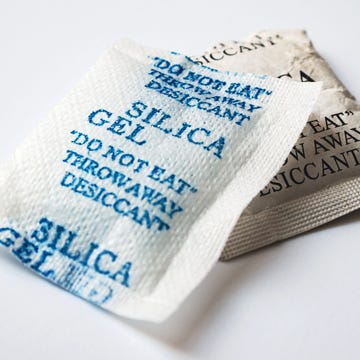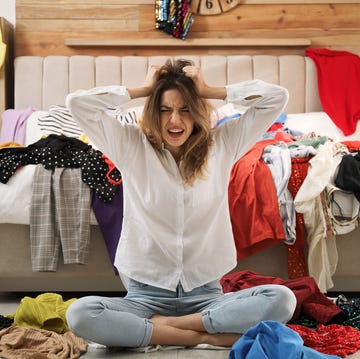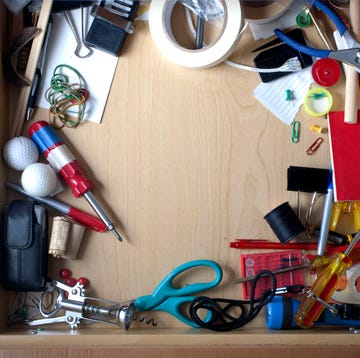I’ve tried my fair share of declutter methods. Just last month, I was rotating my hangers to try the reverse hanger technique. And prior to that, I cleared out my bedroom with the ski slope method and gave my front room the ultimate sort-out with Swedish Death Cleaning. But, nothing could have prepared me for the latest trend – the 'poop rule'.
Not the most elegant of names, I’ll grant you. But still, every technique is worth considering, and if it helps to clear the clutter, I’m all ears. So, here I’ll break down exactly what the poop rule involves and whether it’s a winner – or needs the flush.
What is the ‘poop rule’?
Created by lifestyle influencer Amanda Johnson, the ‘poop rule’ really is as simple as it sounds. When you’re struggling to make decisions on items as you declutter (i.e. you struggle to let things go), you imagine the item is covered in poop. Not a pleasant thought, but that’s the point. If you’d be willing to clean and still keep it, then you know it belongs in your home. But, if the answer is no, then it needs to go. It’s utilising your disgust to help you sort through items in your home.
What to read next
Pros and cons of the ‘poop rule’
First, the good. This way of thinking certainly helps you to make quick decisions on items you’re unsure about. Where you might dawdle as you declutter and end up ‘churning’ (moving items around without making a final decision on them, before eventually reabsorbing them into your home), you know how much something means to you almost instantly. It’s an effective way to gauge its true value through visualisation. It’s almost the opposite of the KonMari method, where you consider if something still sparks joy.
It’s also a great way to stay focused on the matter at hand; the visualisation can be a particular aid for those with ADHD, removing all other options and keeping the decision to a simple 'keep or declutter'. It turns the chore of decluttering into a game, and motivates you to make decisions.
This graphic way of thinking can help to let go of more than you usually would as you declutter – cutting your emotional ties, and you’d likely be able to declutter much faster too. Few things are likely to be worth enough that you’d keep them under such circumstances. But, that can be seen as a negative point too. Depending on how skittish you are around such stains, you might end up removing most things from your home with this mindset – only to face regrets later.
With that in mind, this technique isn’t the best for sorting through sentimental items either. These items are some of the most difficult to make decisions on because they have such a strong emotional attachment. They spark memories and feelings and are often our most valuable of possessions. At the very least, they require a lot more thought than – would I keep this if it was covered in poop? This mindset won’t help you come to an appropriate decision; more time and consideration is needed. Check out our ultimate declutter guide for advice on sorting sentimental items.
Verdict
So, is the poop rule worth the attention? It depends on how you think and what you’re decluttering. It’s good for sorting through everyday, mundane items, where there’s no fear of regret. And it’s also ideal for maintaining focus and attention, avoiding those difficult ‘save for later’ decisions.
But, it’s not a practical way of sorting through things with any great value, particularly sentimental items. You’re not giving these things true consideration, and instead you’re judging based on your gut reaction from disgust.
Ultimately, it’s down to you. If such a visualisation makes you declutter too readily, leading to potential regret, stick to more traditional declutter methods to judge the true value of precious items, such as KonMari or Swedish Death Cleaning.
However, if you find the poop rule works for you, and helps you to maintain focus, it’s worth keeping it in the back of your mind as you declutter everyday items. But watch you don’t get carried away!













